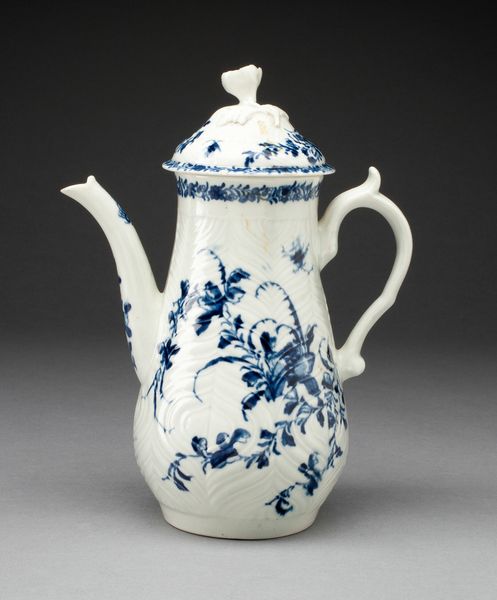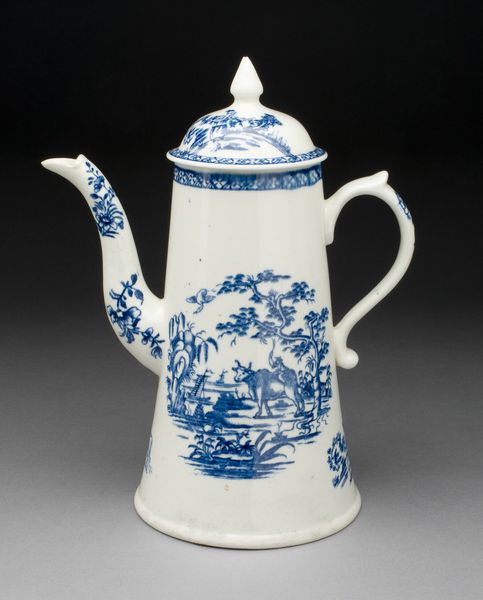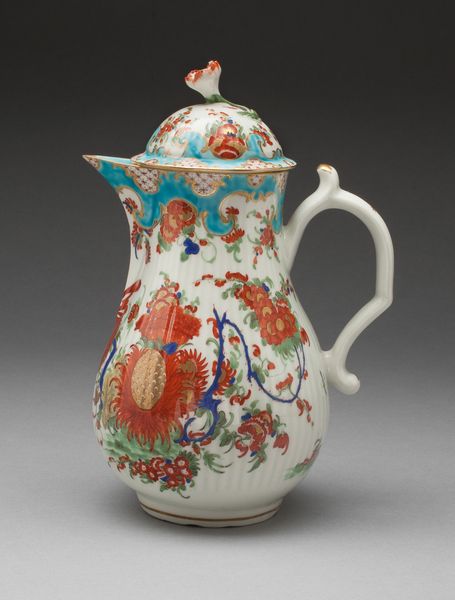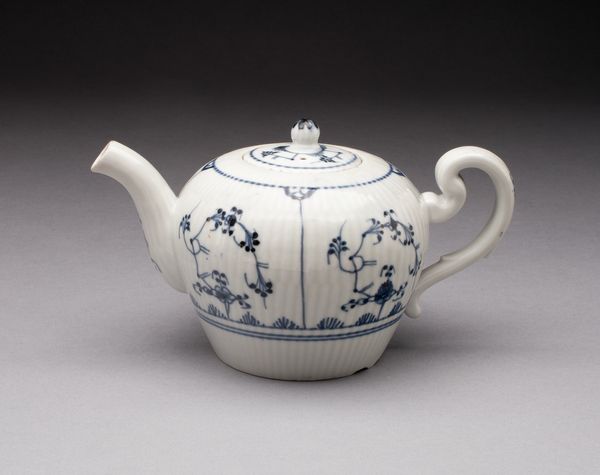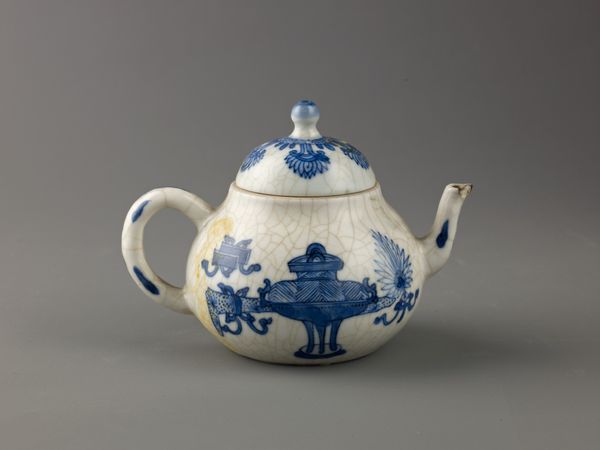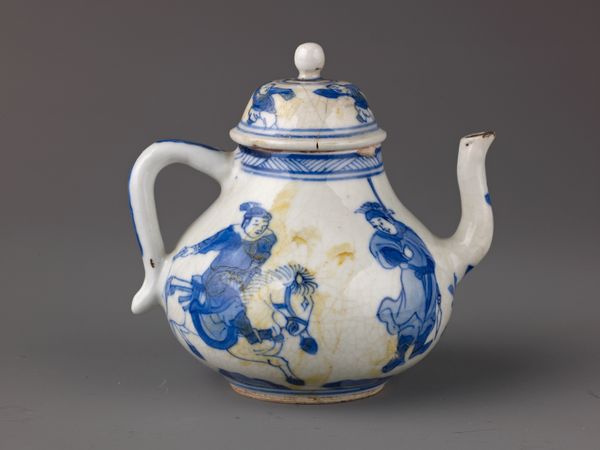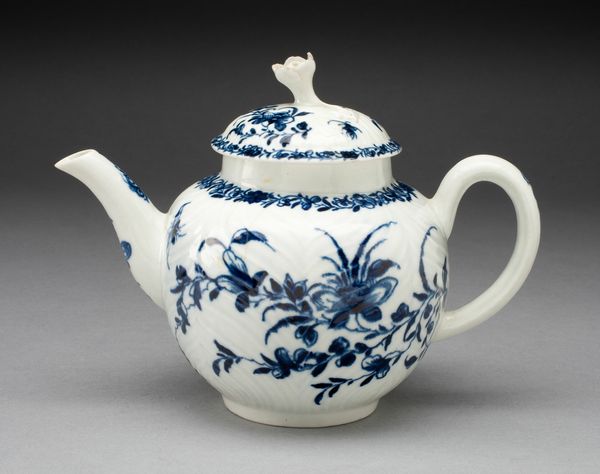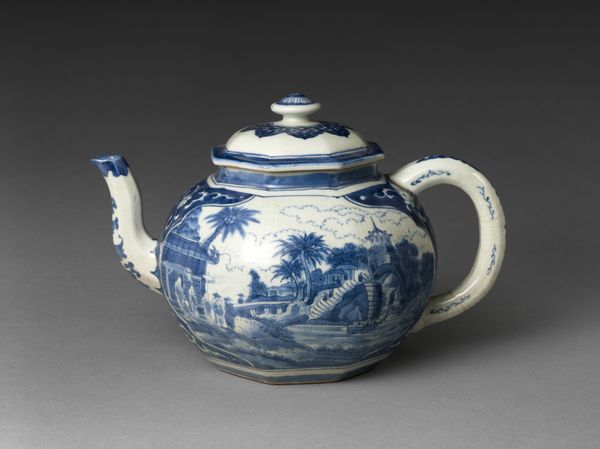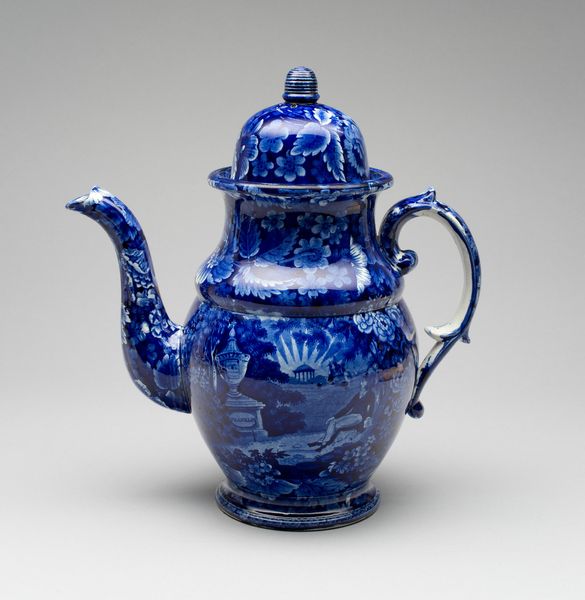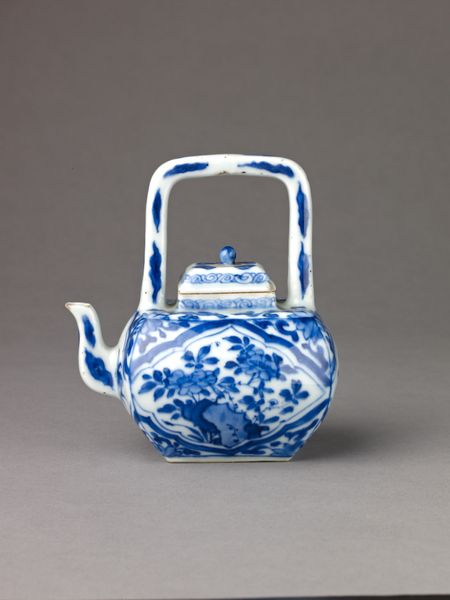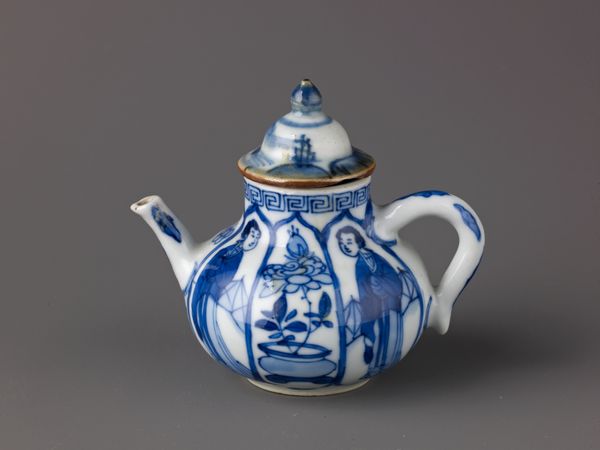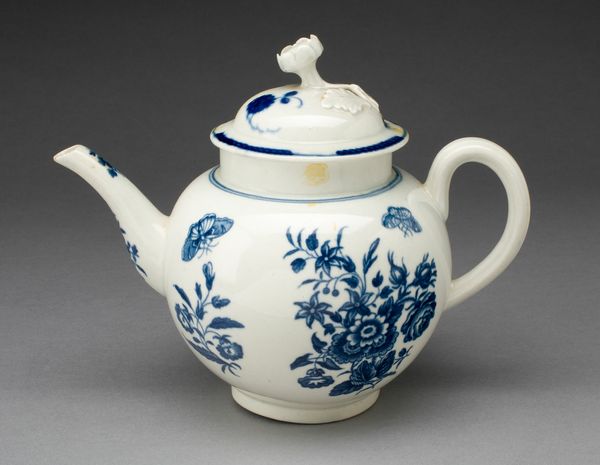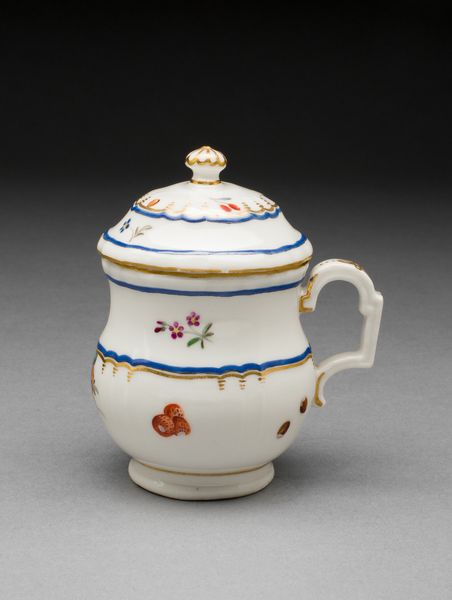
ceramic, porcelain
#
ceramic
#
porcelain
#
ceramic
#
decorative-art
#
rococo
Dimensions: 23.5 × 17.8 cm (9 1/4 × 7 in.)
Copyright: Public Domain
Curator: Here we have a charming example of 18th-century English design: a "Coffee Pot" crafted around 1755 by the Worcester Royal Porcelain Company. Editor: It's quite delicate, isn’t it? The almost ghostly white porcelain contrasted with the vivid cobalt blue…it’s like holding a winter day in your hands. Curator: Absolutely. Worcester was highly regarded for its porcelain's superior quality and translucency, a hallmark achieved through their unique soapstone recipe. Editor: Looking closely, it strikes me how this object, intended for daily use, showcases such elaborate Rococo detailing. Do you think that contrast influenced perceptions of class or social standing at the time? Curator: Without a doubt. Tea and coffee drinking became rituals closely tied to status. Owning fine porcelain, especially from a prestigious maker, broadcasted one's taste and wealth to visiting guests and larger society. These weren't merely utilitarian items; they were powerful symbols. Editor: I see hints of Chinese influences too, particularly in that floral blue patterning along the base and the lid. Was there much East-meets-West dialogue? Curator: Precisely. The European porcelain industry was born out of a fascination with, and an attempt to replicate, imported Chinese porcelain. You can see it reflected in the form as well—it's simultaneously European and alluding to global trade routes, power and colonization. Editor: The spout, too—almost sculptural in its detailing, don't you think? Considering it comes from the Rococo era, a movement known for its excess and flamboyant aesthetic, how much would ownership of such an object influence someone's own artistic perspective? Curator: Well, we know collecting influenced design, but this kind of craftsmanship was so advanced that it surely influenced aesthetic sensibilities within households, shaping discussions about art, culture, and societal aspirations. Editor: Looking at the coffee pot, then, we see it wasn’t only about drinking coffee. Curator: Exactly. This piece offers insight into production processes, the global economy, and aspirations within 18th-century English society. Editor: Beautifully said; a lovely vessel for appreciating history.
Comments
No comments
Be the first to comment and join the conversation on the ultimate creative platform.
